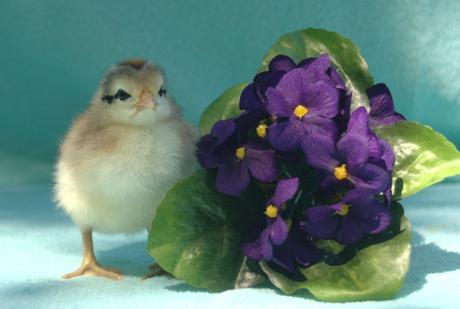Thank you all for your wonderful and supportive comments regarding my father, each one has touched me. The funeral will be this weekend and while it will be sad, all of my brothers and sisters will be there, along with my mother. I’m sure we’ll all have some big smiles as we remember our Dad.
***
As it is spring in New Hampshire (at least on the calendar – we ended up getting some snow on the first day of spring) people’s thoughts are turning to chicks. I gave a chickens 101 presentation to a women’s group who were interested in either getting chicks or continuing to maintain their current flock. They had lots of great questions, backyard chickens are still gaining in popularity.
We got 12 new chicks last spring (only 1 ended up dying) and don’t really need any new members of our flock (in a few weeks, we are going to be flush with eggs) but knowing that the peregrine falcons have discovered our backyard take-out restaurant, I’m going to be getting 4 new chicks just in case.
This time, I’ve decided to get 2 Columbian Rock Cross and 2 more New Hampshire Reds. Of last year’s batch, it was the New Hampshire Reds that ended up being the friendliest and most willing to interact with the rest of the family. They are a sturdy, red/brown, consistent egg laying bird bred specifically for our climate. For us, that’s a win-win-win situation.
As far as the Columbian Rocks, although they look similar to Light Brahma’s (of which we have had 2) there is enough of a difference for me to give them a try. As you have probably figured out, we like a flock filled with diversity.
If you are going to branch out and try different birds this season, go for it, but here’s some good advice I was given by a trusted chicken breeder – the old saying “birds of a feather, flock together” is an old saying for a reason. When you get new chicks either get at least 2 of each kind (so they have similar buddies) or try to keep them all to the same relative size. Try not to introduce all or a single bantam into a flock of standard-sized chickens. That just sets up the perfect condition for serious pecking.
If you do want to try a different size in your flock (or a significantly different shape) just make sure you have at least a pair. Not saying that you won’t have pecking, but at least they will be able to band together for support.
By having similar chicks, it will make introduction into the flock that much easier when the time comes.
Our chick order has to be in by March 30th and then it just becomes a waiting game until we become chick parents (again.)
Have to say, I simply adore chick season – when else do you get to do things like this?

***
Wendy Thomas writes about the lessons learned while raising children and chickens in New Hampshire. Contact her at [email protected]
Also, join me on Facebook to find out more about the flock (children and chickens) and see some pretty funny chicken jokes, photos of tiny houses, and even a recipe or two.
Like what you read here? Consider subscribing to this blog so that you’ll never miss a post. And feel free to share with those who may need a little chicken love.

